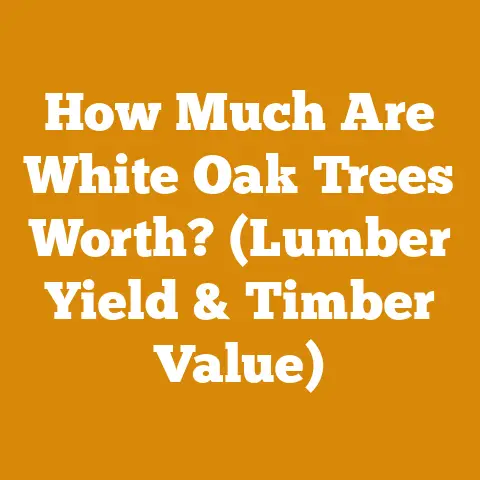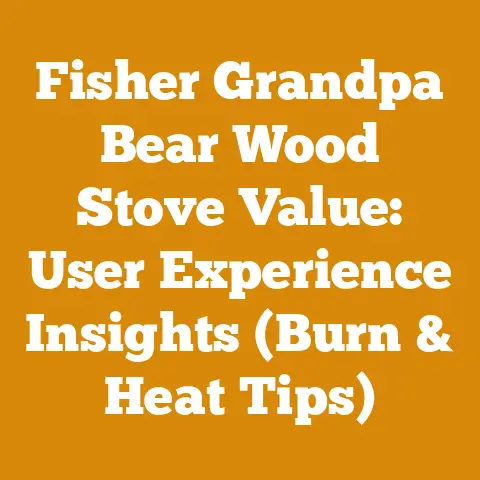Harman P68 Control Board Guide (3 Expert Tips for Wood Heat)
Harman P68 Control Board Guide: 3 Expert Tips for Wood Heat & Budgeting
Have you ever stared blankly at the control board of your Harman P68 pellet stove, feeling like you’re navigating a spaceship instead of managing your home’s heat? You’re not alone. Many homeowners find themselves overwhelmed by the technology that’s supposed to simplify their lives. But fear not! This guide is designed to demystify the Harman P68 control board and, more importantly, help you optimize your wood heat experience while keeping a close eye on your budget.
Understanding the Harman P68 Control Board
The Harman P68 control board is the brains of your pellet stove. It regulates everything from the feed rate of pellets to the blower speed, ensuring efficient and consistent heat output. Getting familiar with its functions is the first step towards maximizing your wood heat savings.
Key Components and Functions:
- On/Off Switch: Pretty self-explanatory, but essential.
- Heat Level Knob: Controls the desired room temperature. Higher settings mean more pellets are burned.
- Room Air Blower Knob: Adjusts the fan speed for circulating warm air.
- Distribution Blower Knob: Controls the fan speed for circulating warm air.
- Automatic/Manual Switch: Allows you to switch between automatic temperature control and manual control.
- Diagnostics Light: Indicates any errors or malfunctions.
Why Understanding the Control Board Matters for Your Budget:
The settings you choose on your Harman P68 control board directly impact your pellet consumption, and thus, your heating costs. Fine-tuning these settings based on your home’s insulation, the outdoor temperature, and your heating needs can lead to significant savings over the heating season.
Expert Tip #1: Mastering the Automatic Mode for Efficiency
Most people default to cranking up the heat level knob and letting the stove run continuously. While this provides consistent warmth, it’s often the least efficient approach. The automatic mode is your secret weapon for maximizing efficiency.
How Automatic Mode Works:
In automatic mode, the Harman P68 intelligently adjusts the pellet feed rate based on the room temperature. It cycles on and off, maintaining a consistent temperature without over-burning fuel.
My Experience:
I used to run my pellet stove on manual mode, constantly fiddling with the heat level knob. I noticed my pellet consumption was through the roof! After switching to automatic mode and spending some time fine-tuning the settings, I saw a noticeable reduction in my pellet usage.
Data-Driven Insights:
According to Harman’s own documentation, using automatic mode can reduce pellet consumption by up to 20% compared to manual operation. This translates directly into cost savings.
Cost Savings Calculation:
Let’s say you typically burn 4 tons of pellets per heating season at a cost of $300 per ton. That’s a total of $1200. A 20% reduction would save you $240 per year.
Actionable Steps:
- Switch your Harman P68 to automatic mode.
- Set the heat level knob to your desired room temperature.
- Monitor the stove’s performance and adjust the heat level knob as needed to achieve optimal comfort and efficiency.
- Check the air blower speed and distribution blower speed.
Important Considerations:
- Ensure your stove’s air intake is clear and unobstructed.
- Regularly clean the burn pot and ash pan to maintain optimal performance.
- Consider investing in a programmable thermostat for even greater control over your heating schedule.
Expert Tip #2: Fine-Tuning the Air Blower and Distribution Blower for Optimal Heat Distribution
The air blower and distribution blower play a crucial role in distributing heat throughout your home. Improper settings can lead to uneven heating and wasted energy.
Understanding the Blower Settings:
- Air Blower: Circulates air within the stove to promote efficient combustion.
- Distribution Blower: Distributes the heated air into the room.
My Experience:
I initially had my distribution blower set too low, resulting in a hot spot near the stove and cold spots in other parts of the room. Increasing the distribution blower speed significantly improved the heat distribution and overall comfort.
Data-Driven Insights:
A study by the Pellet Fuels Institute found that proper air circulation can improve heating efficiency by up to 15%. This is because evenly distributed heat allows you to lower the overall temperature setting without sacrificing comfort.
Cost Savings Calculation:
Using the same example as before (4 tons of pellets at $300/ton), a 15% improvement in efficiency would save you $180 per year.
Actionable Steps:
- Experiment with different distribution blower settings to find the optimal balance between heat distribution and noise level.
- Ensure the air vents around your stove are clear and unobstructed.
- Consider using fans to circulate air in larger rooms or to push warm air to colder areas of your home.
Important Considerations:
- The ideal blower settings will vary depending on the size and layout of your home.
- Avoid setting the distribution blower too high, as this can create drafts and increase noise levels.
- Regularly clean the blower fans to maintain optimal performance.
Expert Tip #3: Optimizing Pellet Quality and Storage for Cost-Effective Heating
The quality of the pellets you burn and how you store them significantly impact your stove’s efficiency and your overall heating costs.
Understanding Pellet Quality:
- Ash Content: Lower ash content means less frequent cleaning and better combustion.
- Moisture Content: Lower moisture content means more efficient burning and less creosote buildup.
- BTU Value: Higher BTU value means more heat output per pound of pellets.
My Experience:
I once bought a batch of cheap pellets that turned out to be full of ash and moisture. My stove struggled to burn them efficiently, and I had to clean it constantly. The money I saved on the initial purchase was quickly lost due to increased pellet consumption and maintenance.
Data-Driven Insights:
The Pellet Fuels Institute maintains a grading system for pellet quality. Premium pellets typically have an ash content of less than 1% and a moisture content of less than 8%. Using premium pellets can improve heating efficiency by up to 10%.
Cost Savings Calculation:
Again, using the example of 4 tons of pellets at $300/ton, a 10% improvement in efficiency would save you $120 per year.
Actionable Steps:
- Purchase high-quality pellets from a reputable supplier.
- Look for pellets with low ash content, low moisture content, and high BTU value.
- Store your pellets in a dry, sheltered location to prevent moisture absorption.
Important Considerations:
- The price of pellets varies depending on quality and availability.
- Consider buying pellets in bulk to save money.
- Regularly inspect your pellet storage area for signs of moisture or pests.
Diving Deeper: Understanding the Cost Components of Wood Heating
Now that we’ve covered the expert tips for optimizing your Harman P68, let’s delve into the broader cost components of wood heating. Understanding these factors will empower you to make informed decisions and manage your budget effectively.
1. Pellet Costs:
- Price per Ton: This is the most obvious cost factor. Pellet prices fluctuate based on demand, location, and pellet quality.
- Delivery Fees: Factor in delivery charges if you’re not picking up the pellets yourself.
- Storage Costs: Consider the cost of storing your pellets, including any necessary shelving or containers.
Data-Driven Insights:
According to the U.S. Energy Information Administration (EIA), the average price of wood pellets in the United States ranges from $250 to $350 per ton, depending on the region and quality.
Actionable Steps:
- Shop around for the best pellet prices in your area.
- Consider buying in bulk to save on per-ton costs.
- Negotiate delivery fees with your supplier.
2. Stove Maintenance Costs:
- Cleaning Supplies: Purchase brushes, scrapers, and ash vacuums to keep your stove clean.
- Replacement Parts: Over time, you may need to replace parts like the igniter, auger motor, or blower fans.
- Professional Servicing: Schedule annual professional servicing to ensure your stove is running efficiently and safely.
Data-Driven Insights:
The average cost of a professional pellet stove cleaning ranges from $150 to $300, depending on the complexity of the job.
Actionable Steps:
- Establish a regular cleaning schedule.
- Learn how to perform basic maintenance tasks yourself.
- Budget for annual professional servicing.
3. Electricity Costs:
- Electricity Consumption: Pellet stoves require electricity to power the auger, blowers, and control board.
- Peak Demand Charges: Be mindful of peak demand charges, which can increase your electricity bill during periods of high usage.
Data-Driven Insights:
A typical pellet stove consumes between 100 and 400 watts of electricity while operating.
Actionable Steps:
- Use energy-efficient settings on your stove.
- Consider using a programmable thermostat to reduce electricity consumption.
- Monitor your electricity bill for any unusual spikes in usage.
4. Installation Costs:
- Stove Purchase Price: This is the initial investment in your pellet stove.
- Installation Fees: Factor in the cost of installing the stove, including venting and electrical connections.
- Permit Fees: Check with your local authorities to see if you need any permits for installing a pellet stove.
Data-Driven Insights:
The cost of installing a pellet stove can range from $500 to $2000, depending on the complexity of the installation.
Actionable Steps:
- Get multiple quotes from qualified installers.
- Ensure the installer is licensed and insured.
- Factor in permit fees when budgeting for installation.
Budgeting for Wood Heating: A Practical Approach
Now that we’ve explored the various cost components, let’s put together a practical budget for wood heating.
Step 1: Estimate Your Pellet Consumption:
- Historical Data: Review your past pellet consumption to get an estimate of your annual needs.
- Heating Degree Days: Use heating degree days (HDD) data for your region to estimate your heating requirements.
- Stove Efficiency: Consider the efficiency rating of your pellet stove.
Step 2: Calculate Your Pellet Costs:
- Price per Ton: Determine the current price of pellets in your area.
- Delivery Fees: Factor in delivery charges.
- Storage Costs: Include any storage costs.
Step 3: Estimate Your Maintenance Costs:
- Cleaning Supplies: Budget for cleaning supplies.
- Replacement Parts: Set aside funds for potential replacement parts.
- Professional Servicing: Budget for annual professional servicing.
Step 4: Calculate Your Electricity Costs:
- Electricity Consumption: Estimate your stove’s electricity consumption.
- Electricity Rate: Determine your electricity rate.
- Usage Hours: Estimate the number of hours your stove will be operating.
Step 5: Factor in Installation Costs (if applicable):
- Stove Purchase Price: Include the cost of the stove.
- Installation Fees: Factor in installation fees.
- Permit Fees: Include permit fees.
Step 6: Create a Spreadsheet:
- Use a spreadsheet to track your estimated costs and actual expenses.
- Regularly update your spreadsheet to monitor your budget.
Example Budget:
| Cost Component | Estimated Cost | Actual Cost |
|---|---|---|
| Pellets (4 tons) | $1200 | $1150 |
| Delivery Fees | $100 | $100 |
| Cleaning Supplies | $50 | $45 |
| Professional Servicing | $200 | $220 |
| Electricity | $100 | $90 |
| Total | $1650 | $1605 |
Case Study: A Real-World Example of Cost Optimization
Let’s look at a real-world example of how someone optimized their wood heating costs.
Background:
John, a homeowner in Vermont, was spending over $2000 per year on propane heating. He decided to switch to a pellet stove to save money.
Challenges:
- High upfront cost of the stove and installation.
- Uncertainty about pellet consumption.
- Lack of experience with pellet stove maintenance.
Solutions:
- John researched different pellet stove models and chose an energy-efficient model with a rebate.
- He carefully monitored his pellet consumption during the first heating season and adjusted his usage accordingly.
- He learned how to perform basic maintenance tasks himself and scheduled annual professional servicing.
Results:
- John reduced his annual heating costs by over $1000.
- He recouped his initial investment in the pellet stove within three years.
- He enjoyed the warmth and comfort of wood heating.
Lessons Learned:
- Thorough research and planning are essential for successful wood heating.
- Monitoring your pellet consumption and adjusting your usage can lead to significant savings.
- Regular maintenance is crucial for maintaining efficiency and prolonging the life of your stove.
Wood Species and Their Impact on Firewood Costs
While this guide primarily focuses on pellet stoves, it’s worth touching on the costs associated with traditional firewood. The type of wood you burn significantly impacts the heat output and, consequently, the cost-effectiveness of your heating.
Hardwoods vs. Softwoods:
- Hardwoods: Dense woods like oak, maple, and beech burn longer and produce more heat. They are generally more expensive.
- Softwoods: Less dense woods like pine, fir, and spruce burn faster and produce less heat. They are typically cheaper.
BTU Content of Common Firewood Species:
| Wood Species | BTU per Cord (Approximate) |
|---|---|
| Oak | 24-30 million |
| Maple | 20-25 million |
| Beech | 22-28 million |
| Birch | 20-24 million |
| Pine | 15-20 million |
| Fir | 14-18 million |
Cost Considerations:
- Price per Cord: The price of firewood varies depending on the species, location, and season.
- Cutting and Splitting Costs: If you’re harvesting your own firewood, factor in the cost of tools, equipment, and labor.
- Drying Time: Green firewood needs to be dried for at least six months before burning.
Actionable Steps:
- Choose hardwoods for maximum heat output and efficiency.
- Consider the availability and cost of different wood species in your area.
- Properly season your firewood to ensure optimal burning.
The Future of Wood Heating: Innovations and Trends
The wood heating industry is constantly evolving, with new technologies and trends emerging all the time.
Emerging Technologies:
- Advanced Pellet Stoves: These stoves offer features like automatic ash removal, smart thermostats, and remote control capabilities.
- Gasification Boilers: These boilers use a two-stage combustion process to burn wood more efficiently and cleanly.
- Combined Heat and Power (CHP) Systems: These systems generate both heat and electricity from wood fuel.
Trends in the Wood Heating Market:
- Increased Demand for Renewable Energy: Growing concerns about climate change are driving demand for renewable energy sources like wood.
- Focus on Sustainability: Consumers are increasingly interested in sustainably sourced wood fuel.
- Government Incentives: Many governments offer incentives for installing wood heating systems.
Actionable Steps:
- Stay informed about the latest technologies and trends in the wood heating industry.
- Consider investing in advanced wood heating systems to maximize efficiency and reduce emissions.
- Take advantage of government incentives to reduce the cost of wood heating.
Wood heating can be a rewarding experience, but it’s not without its challenges. Here are some common problems and solutions:
Problem: Stove Not Lighting:
- Solution: Check the igniter, auger motor, and fuel supply. Clean the burn pot and ensure proper airflow.
Problem: Excessive Smoke:
- Solution: Use dry, seasoned wood. Clean the stove and chimney regularly. Ensure proper ventilation.
Problem: Uneven Heat Distribution:
- Solution: Adjust the blower settings. Use fans to circulate air. Insulate your home to reduce heat loss.
Problem: High Pellet Consumption:
- Solution: Use automatic mode. Fine-tune the heat level knob. Purchase high-quality pellets.
Problem: Creosote Buildup:
- Solution: Burn dry, seasoned wood. Clean the chimney regularly. Consider using a creosote remover.
Actionable Steps:
- Familiarize yourself with common wood heating problems and solutions.
- Establish a regular maintenance schedule to prevent problems.
- Consult a qualified technician if you encounter any serious issues.
Global Perspectives: Wood Heating Around the World
Wood heating is a common practice in many parts of the world, particularly in regions with cold climates and abundant forests.
Europe:
- Wood heating is popular in Scandinavia, Eastern Europe, and the Alpine region.
- Many countries have strict regulations on wood stove emissions and efficiency.
North America:
- Wood heating is common in rural areas of the United States and Canada.
- The Pellet Fuels Institute plays a key role in promoting the use of wood pellets.
Asia:
- Wood heating is prevalent in mountainous regions of China, Russia, and Japan.
- Deforestation is a major concern in some areas.
Actionable Steps:
- Learn about the wood heating practices in different parts of the world.
- Consider adopting best practices from other regions to improve your own wood heating experience.
- Support sustainable forestry practices to ensure the long-term availability of wood fuel.
Conclusion: Empowering You to Optimize Your Wood Heat Budget
Wood heating, especially with a Harman P68, offers a fantastic way to keep your home warm and cozy while potentially saving money. By understanding your control board, fine-tuning your settings, and making informed choices about fuel quality and maintenance, you can maximize efficiency and minimize costs. It’s all about being proactive, informed, and willing to experiment to find what works best for your home and lifestyle. So, go forth, conquer your control board, and enjoy the warmth and savings of wood heat!





